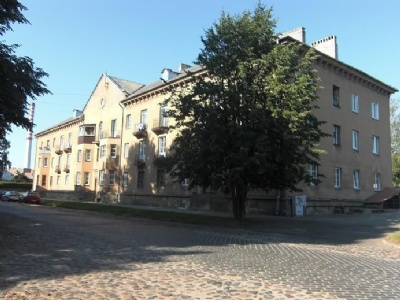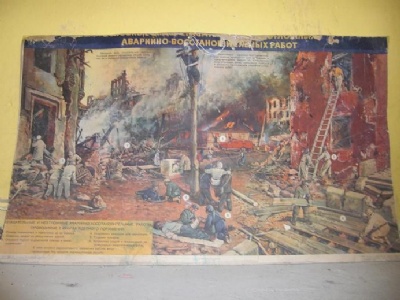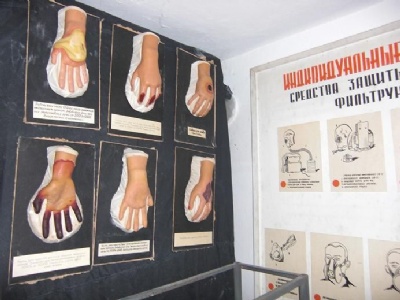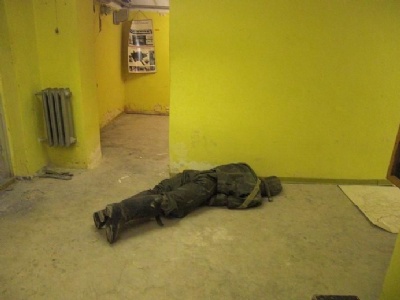Liepaja Shelter
In central Liepaja there is a residential building with a shelter in the basement. There is nothing unique about this because it was rather commonn during the Cold war with shelters in residential buildings (even in Sweden). After the collapse of the Soviet Union in 1991, the tension between the super powers United States and former Soviet union. But during the Cold war, the other was portrayed as threatening and both superpowers had a huge nuclear arsenal. An arsenal that served as a balance of terror in such a way that one did not dare to attack the other in fear of retaliation. Both knew that a nuclear war would have devastating consequences. The danger of a nuclear attack from the other was constantly present and therefore shelters were built in residential building’s cellars. The shelter in Liepaja was for years forgotten, but when it was opened a lot of things were found that were a reflection of the climate of the Cold war.
Current status: Preserved (2009).
Location: 56°30'44.95" N 21°00'18.45" E
Get there: Walk from central Liepaja.
Follow up in books: Gaddis, John Lewis: The Cold War: A New History (2006).





The shelter is not a museum and can only be visited in the company of a guide by contacting the tourist office in Liepaja. Everywhere in the shelter there are posters depicting a nuclear attack and the consequences it could have. The posters also show instructions on how to act in the event of a nuclear attack. In addition to this, there’s a lot of rubber body parts that illustrated what symptoms of radioactivity could look like. This is because it would be easy to identify radioactive wounds on people. There are also prostheses everywhere and a lot of protective equipment. All medical equipment reinforces the apocalyptic theme of the posters on how a possible nuclear attack from NATO could be perceived.